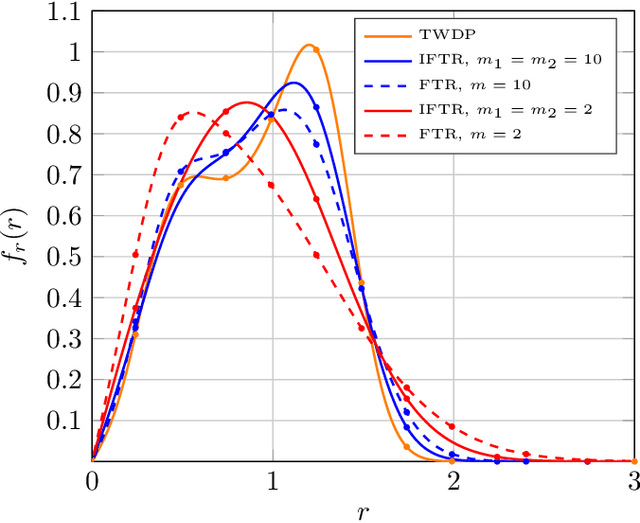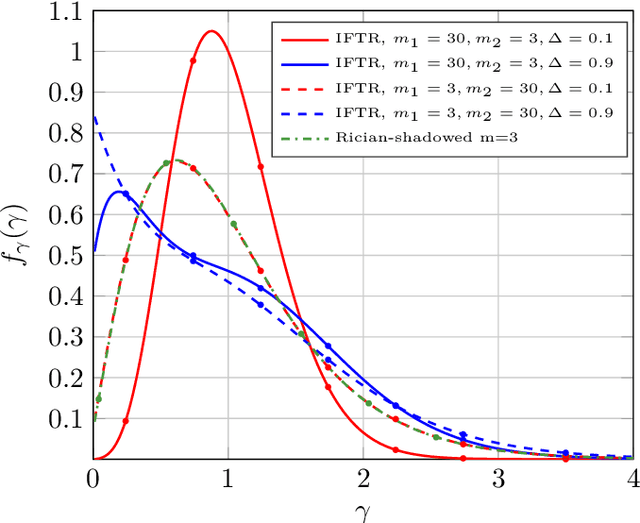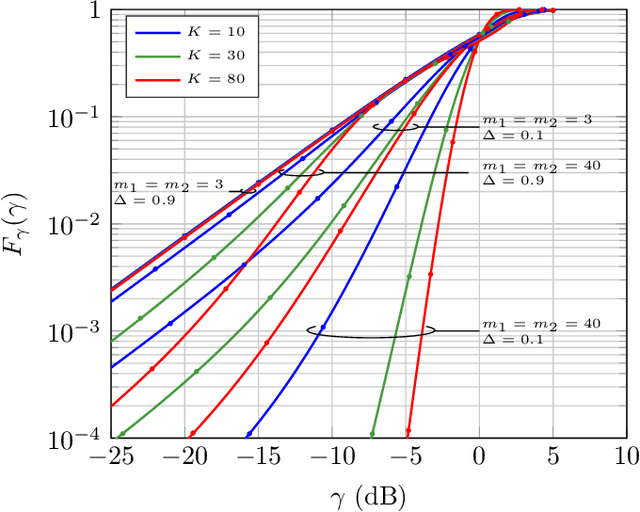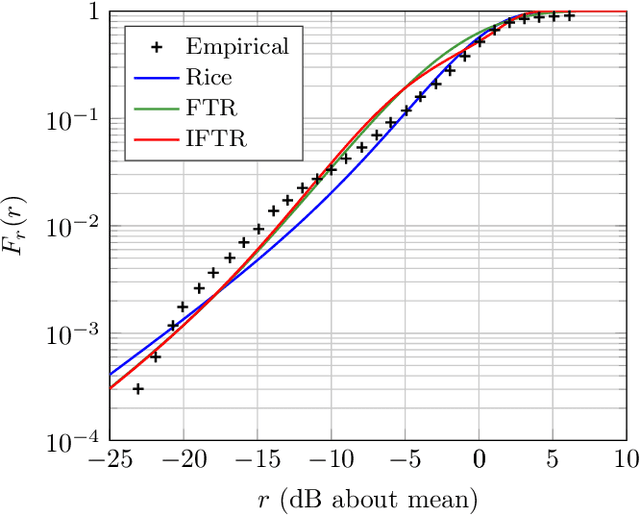José A. Cortés
On the Statistical Analysis of the Multipath Propagation Model Parameters for Power Line Communications
Mar 26, 2024



Abstract:This paper proposes a fitting procedure that aims to identify the statistical properties of the parameters that describe the most widely known multipath propagation model (MPM) used in power line communication (PLC). Firstly, the MPM parameters are computed by fitting the theoretical model to a large database of single-input-single-output (SISO) experimental measurements, carried out in typical home premises. Secondly, the determined parameters are substituted back into the MPM formulation with the aim to prove their faithfulness, thus validating the proposed computation procedure. Then, the MPM parameters properties have been evaluated. In particular, the statistical behavior is established identifying the best fitting distribution by comparing the most common distributions through the use of the likelihood function. Moreover, the relationship among the different paths is highlighted in terms of statistical correlation. The identified statistical behavior for the MPM parameters confirms the assumptions of the previous works that, however, were mostly established in an heuristic way.
The Fluctuating Two-Ray Fading Model with Independent Specular Components
May 11, 2022



Abstract:We introduce and characterize the independent fluctuating two-ray (IFTR) fading model, a class of fading models consisting of two specular components which fluctuate independently, plus a diffuse component modeled as a complex Gaussian random variable. The IFTR model complements the popular fluctuating two-ray (FTR) model, on which the specular components are fully correlated and fluctuate jointly. The chief probability functions of the received SNR in IFTR fading, including the PDF, CDF and MGF, are expressed in closed-form, having a functional form similar to other state-of-the-art fading models. Then, the IFTR model is empirically validated using multiple channels measured in rather diverse scenarios, including line of sight (LOS) millimeter-wave, land mobile satellite (LMS) and underwater acoustic communication (UAC), showing a better fit than the original FTR model and other models previously used in these environments. Additionally, the performance of wireless communication systems operating under IFTR fading is evaluated in closed-form in two scenarios: (i) exact and asymptotic bit error rate for a family of coherent modulations; and (ii) exact and asymptotic outage probability.
 Add to Chrome
Add to Chrome Add to Firefox
Add to Firefox Add to Edge
Add to Edge